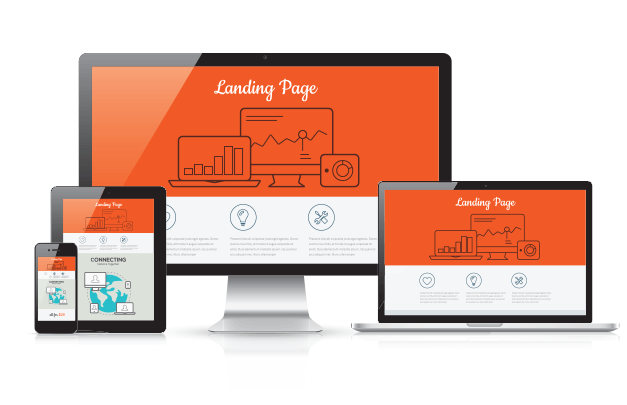Not much more than 10 years ago, the social media landscape was a very different place. Twitter was in its infancy, Instagram had just launched, MySpace was an aging platform, and Facebook was the king. This somewhat basic terrain made marketing via social media a relatively simple proposition, at least in terms of the sophistication level of the social sphere.
Today, social media strategy for B2B companies is a whole other animal. The ever-evolving world of social media has seen quite a lot of change in the past years with TikTok’s rapid rise in popularity and now potential ban in the U.S., Twitter’s rebrand as X, and the introduction of Instagram Threads.
Not only are there more platforms, but also the kind of content you can create has diversified beyond mere images with copy and links — streaming video, animated images, GIFs, and even chatbots can be important tools not only to engage with customers via social media, but also to help drive business growth.
This begs the question: With all this change, has your social media strategy kept pace with the times? It’s something to seriously consider, especially since your competitors are likely considering it too — in fact, a recent study revealed that 48% of marketers publish posts about products or news multiple times a week.
The good news is we have a couple of interesting avenues to help you level up your social media in 2024 and beyond.
Use AI to help brainstorm effective social media copy
The recent developments in AI-assisted content creation may have some copywriters fearing for the long-term security of their jobs. But rather than feeling threatened by the advancements of this kind of AI, it might be more productive to understand how these things work, and how you can use them to your advantage when creating engaging social media posts.
ChatGPT was developed by the technology company OpenAI and is what’s referred to as a large language model (LLM). The platform is designed to process sequences of text — like sentences and paragraphs — and identify patterns or connections to replicate the structures of natural language.
How does ChatGPT apply to writing effective social media copy? One of the potential benefits of ChatGPT — and AI-assisted platforms in general — is the ability to enhance the ideas you’re trying to convey in your social media copy by filling in gaps with relevant information that might appeal to your followers. For novice social content creators or even experienced pros, platforms like ChatGPT also make it fast and easy to create rough draft copy that you can then refine and customize based on your brand voice.
Basically, you can use ChatGPT as a digital sketchpad to streamline the copy creation process and lay a foundation on which you can build compelling content tailored for specific social media platforms. Plus, it can also serve as a point of inspiration for ideas or messaging you might not have considered.
It’s important to keep in mind that although the abilities that AI has today are impressive, effective social media content still needs to be largely developed and overseen by humans. The ethical and legal parameters of using AI in your content is still something being discussed in legislative environments around the globe. Furthermore, leaning too heavily on AI-generated content can lead to an authenticity issue with your audience or messaging that doesn’t align with your cultivated brand voice.
AI is a great tool, but it is just that — a tool. You wouldn’t expect a hammer to build a house, but you would expect a contractor to use one.
Integrate chatbots to help manage communication with customers
One of the bigger challenges companies face in executing an effective social media strategy is making it easier for customers to slide in and out of their direct messages (DMs). Today’s social media users frequently use social media messaging as a way to investigate and communicate with brands on everything from inquiries about products to requests for updates on current orders.
In fact, a recent survey found 69% of Facebook users said communication with brands on the social platform helped build consumer confidence in a given company. However, many B2B companies simply lack the time and resources to quickly and efficiently respond to messages and nurture these kinds of interactions.
This is where integrating chatbots into social platforms like Facebook can become extremely useful, so much so that we recommend chatbot integrations for many of our clients. Chatbots use a scripted series of responses to common customer questions to mimic the responses of an actual customer representative.
Through custom-built chatbot workflows, you can answer user questions about your brand or your products and services, or you can guide users to helpful, engaging content on your social media profile, website, blog, or even YouTube channel based on the messages your customer sends.
With chatbots, you can automate a potentially time-consuming process where the alternative option — responding slowly or not at all — just isn’t viable for what today’s consumer wants and needs.
Think beyond the copy-paste model when creating content
Repurposing content for multiple platforms is common practice for marketers, particularly in the digital space where the same piece of content can be the foundation for landing pages, blog posts, or emails. But while the same approach for creating social media is certainly efficient, it may not be best practice for effectively engaging with your social followers.
A survey found that the average social media user logs into seven different platforms every month. For companies, this means your social media content is being viewed by users on multiple platforms, and modern social media users have different expectations for how they’re engaged with on specific platforms.
Creating content specifically designed for each platform not only reduces the possibility that followers will expect duplicative content and gloss over your posts, but optimizing your social content by the platform can result in better-performing content.
One recent study found that the primary reason people use Facebook is to message friends and family, and another survey found that 7 out of 10 Americans use X primarily as an outlet for news. This doesn’t mean that B2B companies shouldn’t be on these platforms, but it does mean they should be developing unique content designed for what users expect.
This is also where a centralized dashboard of detailed reporting on the performance of your social posts can provide insight into the kind of content your audience is most responsive to on each platform. Measuring metrics such as likes, shares, comments, and follower growth helps you understand the conversations your followers are most interested in having, and how you can most effectively participate in these conversations on each major social platform.
Make sure your social media is optimized for search
Yes, just like the steps you take to ensure your website is optimized for search through platforms like Google, the same applies for your social media — especially since Google has started serving short-form video in SERPs given the explosion in popularity of content on TikTok and Instagram Reels. This also applies to LinkedIn, where articles or other kinds of thought-leadership content are crafted specifically for publication and sharing within the social platform.
So, how do you make sure your social media is optimized for search? Using some of the same principles of SEO for a website or blog, you can significantly increase the likelihood your social content is featured as more and more users turn to social as a way to explore and investigate brands.
Here are a couple of things to consider when creating social media content to align with best practices for social search:
- Incorporate keywords into your profile handle, bio, description, and posts. But just like with SEO optimization for website or blog content, use the keywords you want to rank for naturally and strategically
- Make sure to include image alt text to help each platform understand what’s included in the image, and to assist those who may be vision-impaired or using assistive technology
- Tag your location (Instagram) or add multiple locations, if you have them (Facebook). This will not only make it easier for your location to come up on the new Instagram Maps when a user searches for a business, but this will also help Facebook users find you if they do a location-centric search
For B2B companies, a social media presence that uses engaging content as a way to interact and communicate with followers is an important part of an effective marketing strategy. The same thought and consideration companies put into their digital and print marketing campaigns needs to be applied to social media, and our team has the knowledge and experience to help you level up your social media efforts.
Learn how our social media services can help you get to where you need to go.



